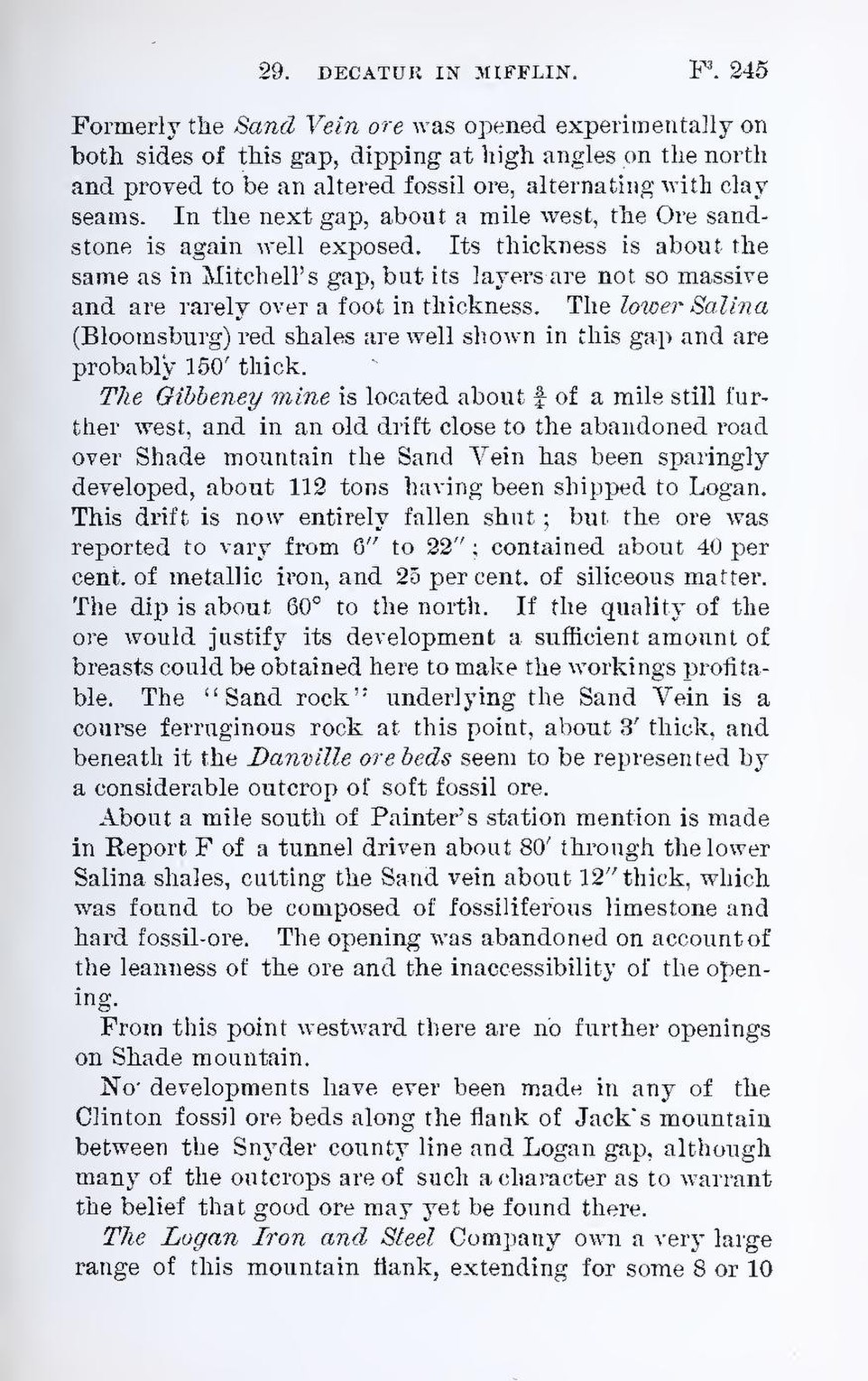Formerly the Sand Vein ore was opened experimentally on both sides of this gap, dipping at high angles on the north and proved to be an altered fossil ore, alternating with clay seams. In the next gap, about a mile west, the Ore sandstone is again well exposed. Its thickness is about the same as in Mitchell’s gap, but its layers are not so massive and are rarely over a foot in thickness. The lower Salina (Bloomsburg) red shales are well shown in this gap and are probably 150′ thick.
The Gibbeney mine is located about ¾ of a mile still further west, and in an old drift close to the abandoned road over Shade mountain the Sand Vein has been sparingly developed, about 112 tons having been shipped to Logan. This drift is now entirely fallen shut; but the ore was reported to vary from 6″ to 22″: contained about 40 per cent. of metallic iron, and 25 per cent. of siliceous matter. The dip is about 60° to the north. If the quality of the ore would justify its development a sufficient amount of breasts could be obtained here to make the workings profitable. The “Sand rock” underlying the Sand Vein is a course ferruginous rock at this point, about 3′ thick, and beneath it the Danville ore beds seem to be represented by a considerable outcrop of soft fossil ore.
About a mile south of Painter’s station mention is made in Report F of a tunnel driven about 80′ through the lower Salina shales, cutting the Sand vein about 12″ thick, which was found to be composed of fossiliferous limestone and hard fossil-ore. The opening was abandoned on account of the leanness of the ore and the inaccessibility of the opening.
From this point westward there are no further openings on Shade mountain.
No developments have ever been made in any of the Clinton fossil ore beds along the flank of Jack’s mountain between the Snyder county line and Logan gap, although many of the outcrops are of such a character as to warrant the belief that good ore may yet be found there.
The Logan Iron and Steel Company own a very large range of this mountain flank, extending for some 8 or 10
